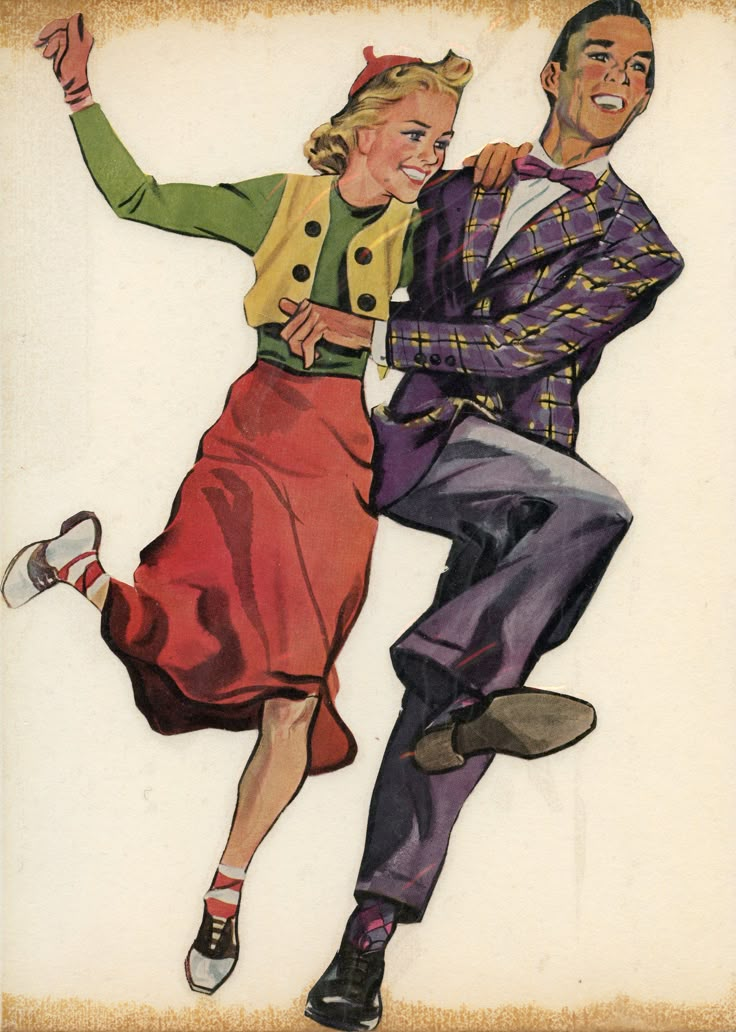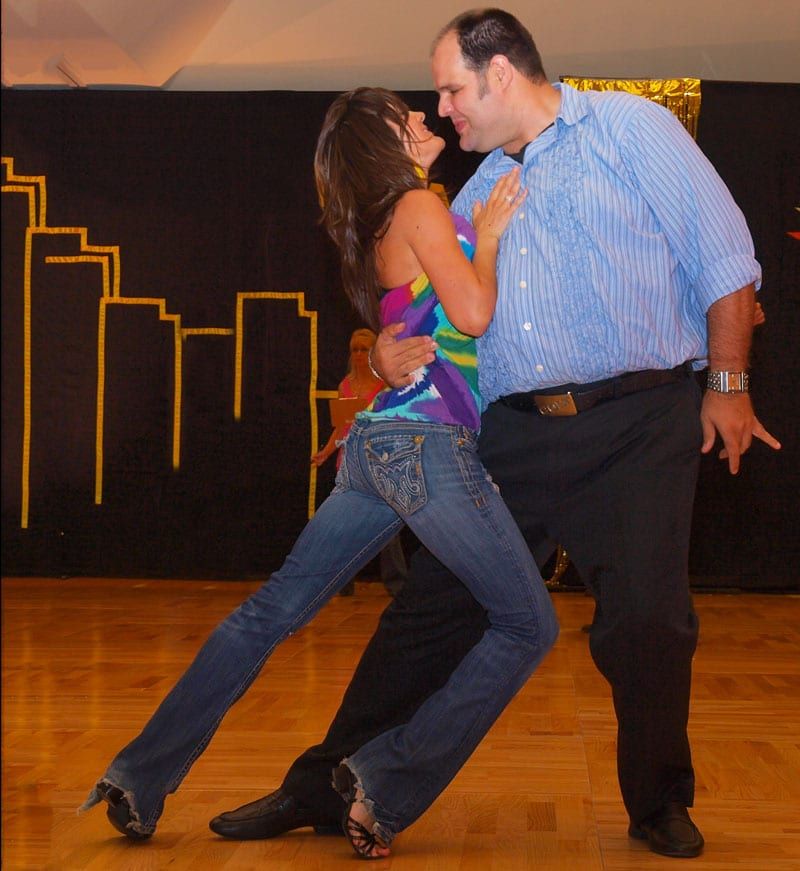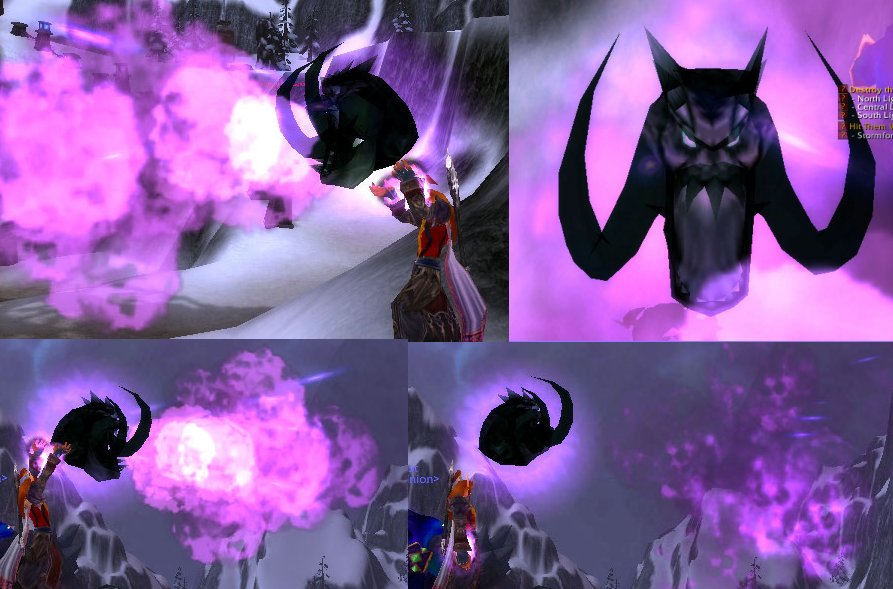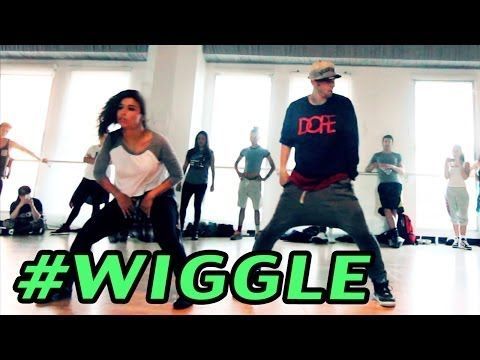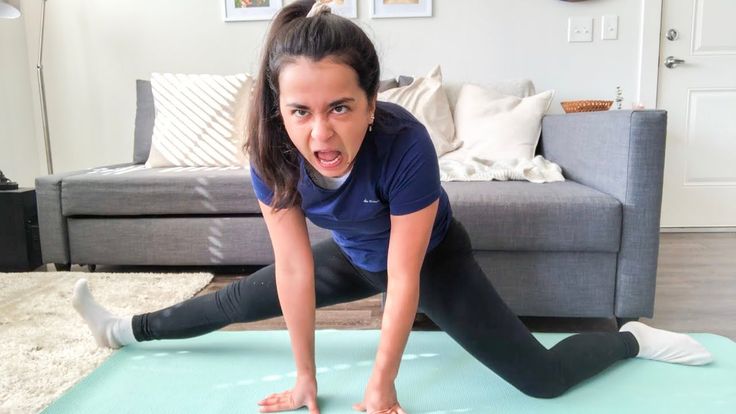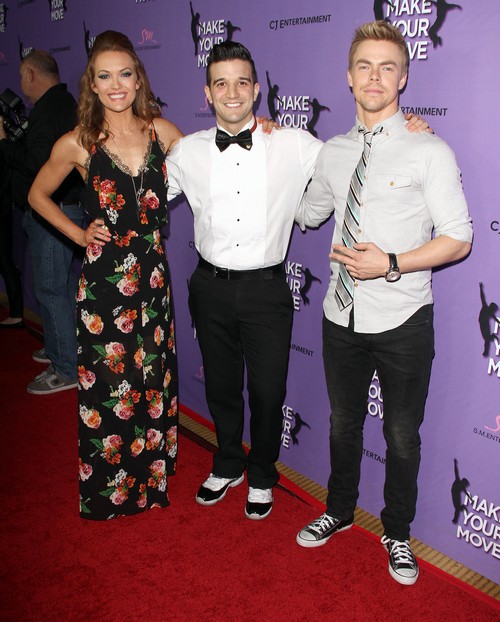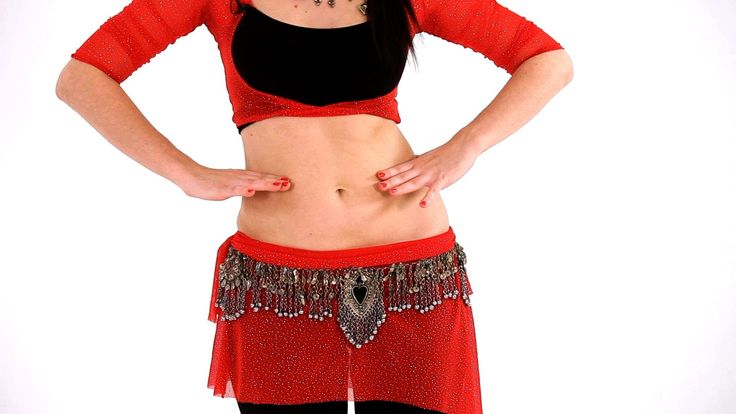How to jitterbug dance
Jitterbug Dance Steps: This Will Surely Get You Going Like a Pro
Jitterbug dance steps are for those who are into freestyle dancing. This article teaches some popular jitterbug dance moves.
The jitterbug dance is a type of swing dance which has been a rage in the US parties since the 90s. In the early 20th century it became associated with swing dancers who danced without any knowledge or control. People could dance the way they wanted to, which made this dance to evolve through many stages. When people became addicted to jitterbug dancing, they were termed as “jitterbugged”.
The jitterbug dance steps are tons of fun if you think you have two left feet. If you want to start of with an easy dance style, then these dance steps are for you. Learning these steps is more fun if you take classes, or else read the steps mentioned below and train yourself. The basic dance steps are counted in six counts of music.
Basic Steps
For new comers let’s start off with some basic and easy dance steps.
Men Steps
(These are the man’s steps, the woman should be facing the man in either an open or closed dance position)
1-2: Step on the left side with the left foot with a slow step in two beats of music.
3-4: Step in place with the right foot with a slow step in two beats of music.
5: With the left footstep back of the right heel, perform this in a quick step in 1 beat of music.
6: Step in place with the right foot in a quick step with 1 beat of music.
Women Steps
(Steps for women, your man should be facing in either an open or closed dance position)
1-2: Step on the right side with the right foot with a slow step in two beats of music.
3-4: Step in place with the left foot with a slow step in two beats of music.
5: Step back with right foot off the left heel, make it a quick step in one beat of music.
6: Step in place with the left foot, make it a quick step in one beat of music.
Advanced Steps
After you have mastered the basic, let’s learn the advanced dance steps.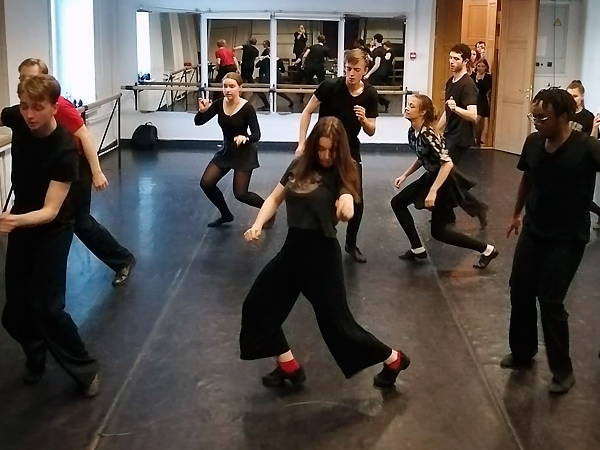 These steps can keep the fun part going on and make your body flexible and agile.
These steps can keep the fun part going on and make your body flexible and agile.
Cuddle Step
In this step, the follower walks forward more than side to side, and the dancing partners often change positions. While the dance steps have to be open or closed, the cuddle step gives a lot of movement space and is a type of “sideways hug” in the middle of a step.
Triple Step
Triple step basically means, that you take two triple steps instead of two initial steps. The outcome is that you take six small steps instead of two basic steps.
Jitterbug Turns
Once you have enough practice of the dance moves, move on to some jitterbug turns. A practice of some turns can make your dance moves attractive and at the same time a lot of fun.
Learning jitterbug dance steps is not at all difficult. You just need some regular practice and a little dash of confidence. A good option to join a class if you are really interested in mastering this dance form.
Like it? Share it!
Uncategorized
Get Updates Right to Your Inbox
Sign up to receive the latest and greatest articles from our site automatically each week (give or take). ..right to your inbox.
..right to your inbox.
Email Address *
How to Do a basic Jitterbug dance routine « Swing :: WonderHowTo
- By myrtie
In this how to video, Gary and Bonnie present an overview of some basic Jitterbug patterns. Learn how to do the cuddle back, the helicopter, the handshake and many other Jitterbug steps with this dance tutorial. Follow the steps in this lesson and you will be dancing the Jitterbug in no time.
Learn how to do the cuddle back, the helicopter, the handshake and many other Jitterbug steps with this dance tutorial. Follow the steps in this lesson and you will be dancing the Jitterbug in no time.
Want to master Microsoft Excel and take your work-from-home job prospects to the next level? Jump-start your career with our Premium A-to-Z Microsoft Excel Training Bundle from the new Gadget Hacks Shop and get lifetime access to more than 40 hours of Basic to Advanced instruction on functions, formula, tools, and more.
Buy Now (97% off) >
Other worthwhile deals to check out:
- 97% off The Ultimate 2021 White Hat Hacker Certification Bundle
- 98% off The 2021 Accounting Mastery Bootcamp Bundle
- 99% off The 2021 All-in-One Data Scientist Mega Bundle
- 59% off XSplit VCam: Lifetime Subscription (Windows)
- 98% off The 2021 Premium Learn To Code Certification Bundle
- 62% off MindMaster Mind Mapping Software: Perpetual License
- 41% off NetSpot Home Wi-Fi Analyzer: Lifetime Upgrades
- Hot
- Latest
how to dance the jitterbug | Russian Bazaar
America
№71 (1202)
Vadim Dymarsky
The Centers for Disease Control and Prevention (CDC) reports a new wave of popularity for an extremely dangerous dance called jitterbug (jitterbug).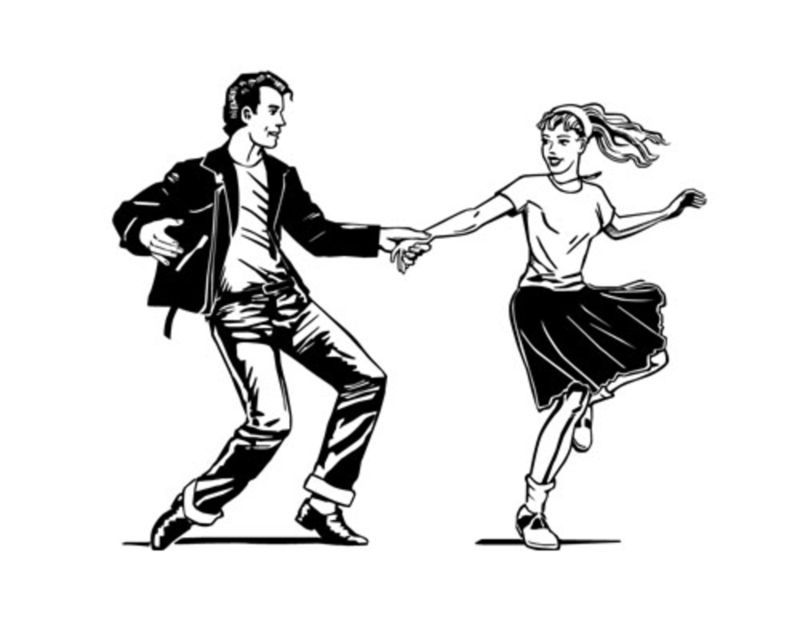 The dance is spreading across the country at an unprecedented speed and, at first glance, the absurd intervention of CDC experts is in fact absolutely justified.
The dance is spreading across the country at an unprecedented speed and, at first glance, the absurd intervention of CDC experts is in fact absolutely justified.
The jitterbug originated in the mid-1930s - some time after the repeal of Prohibition. Back then, drinking establishments were opening at an incredible rate across the country. In the 13 years of the alcohol ban, Americans have grown tired of conservative dances like the tango and the foxtrot. Therefore, the national drunken frenzy gave rise to the jitterbug, which in translation from the southern slang meant "alcoholic delirium".
The jitterbug did not have precise instructions and specifications. As a rule, the dance was performed by two people to live perky music and the laughter of tipsy spectators. The dancers were shaking, spinning around each other, sharply throwing their arms and legs to the side. A woman could suddenly jump on a man and wrap her legs around him. A man could lift a woman to a height and try to keep her balance.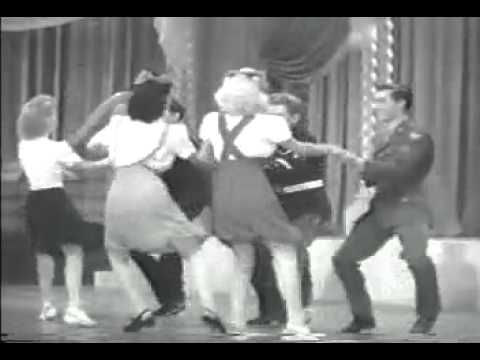 Splits, somersaults, jumps and any other movements that in a sober state would not even come to mind were welcomed.
Splits, somersaults, jumps and any other movements that in a sober state would not even come to mind were welcomed.
With rare exceptions, the jitterbug ended in curious and unexpected falls caused by the loss of balance. This was the main reason for the popularity of the dance. Tipsy and high-spirited patrons of bars, taverns, cabarets and nightclubs died of laughter when a lady flew into the bar or when her partner got tangled in his legs and fell to the floor with a roar.
Sometimes the jitterbug was performed by 20-30 people at once. In this case, the dance floor turned into a real battlefield. People collided with each other, fell, received injuries of varying severity - from bruises to open fractures. Often a large pile of human bodies formed on the floor. Someone laughed with all their might, someone groaned in pain.
There has always been a rule among jitterbug lovers: collisions and sudden movements on the dance floor should not provoke fights. If someone began to behave aggressively, then he was "disqualified" for life.
People went to dance and knew perfectly well how a chaotic release of energy could end.
Between 1935 and 1945, more than a thousand "victims" of the jitterbug sought medical attention daily. Researchers believe that the real number of victims is several times higher, since many victims traveled home on their own, and then rested for several days.
The exact number of deaths due to the jitterbug is unknown, but newspapers from time to time wrote about "another death as a result of alcohol dancing."
Most of these were in Boston and New York.
Founded in 1946, CDC has been fighting jitterbugs almost from day one. The dance began to be associated with drunkenness and recklessness. What annoyed the most conservative CDC executives was the jitterbug-popularizing song. It began with these words:0003
If you want to dance the jitterbug
First you have to drink a little
Mix whiskey, gin and wine in your stomach
Get on stage and let's dance
The jitterbug "died" in the late 1940s.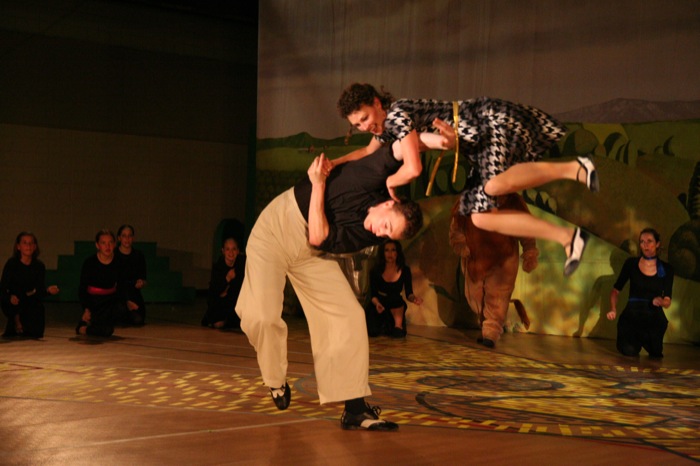 The generation of his biggest fans has grown old. Drinking establishments began to buy black-and-white televisions for customers. Alcohol culture has moved from the stage of unbridled fun to the stage of intimate conversations.
The generation of his biggest fans has grown old. Drinking establishments began to buy black-and-white televisions for customers. Alcohol culture has moved from the stage of unbridled fun to the stage of intimate conversations.
In 1950, the CDC officially declared the "death of the jitterbug". Then no one could even imagine that interest in dance would return almost 70 years later.
Today there is a huge interest in dance from 21-40-year-old Americans. Black and white jitterbug videos dating back to the 1940s and uploaded to YouTube a few years ago now get tens and even hundreds of thousands of views. So, one of the entries in the period from 2014 to 2018 was watched by only 12 people, and in 2019year - more than 200 thousand.
"We thought we had completely eradicated the jitterbug, but unfortunately dance is back and it's a cause for concern," CDC spokeswoman Rebecca Lior said. "Young people are putting themselves at considerable risk."
According to Lior, the most common injuries after dancing are sprained and bruised toes. People leave the dance floor limping, and after a while the pain intensifies. X-ray shows a microcrack or dislocation.
People leave the dance floor limping, and after a while the pain intensifies. X-ray shows a microcrack or dislocation.
At the same time, numerous Internet commentators did not see anything dangerous in the news about the return of the jitterbug. Some even rejoiced at the new entertainment and stressed that any physical activity is better than chatting on social networks on a smartphone.
“When I see a young couple ordering a glass of wine and then staring at their phones, it seems to me that the jitterbug is the best invention of American alcohol culture,” one user remarked. “Seven decades ago, people knew how to really have fun. When it comes to health risks, extreme recreation should always be a little dangerous."
Internet users also noted that the CDC warning about the dangers of jitterbug was a good advertisement. Millions of people who had never heard of this phenomenon from the 1930s and 1940s immediately began to explore an unusual way of relaxing.
Vadim Dymarsky
History of swing - break dance school discovered Charleston and Lindy Hop.

On March 26, 1926, the Savoy Ballroom opened its doors in New York. It became an immediate success with a block-long dance floor and a raised double bandstand. The night dances attracted most of the best dancers in and around New York. Featuring the best dancers and the best black bands, the music at the Savoy is heavily swing jazz. One evening in 1926, after Charles Lindbergh flew to Paris, local dance enthusiast "Shorty George" Snowden watched the dancing couples. A newspaper reporter asked him what kind of dance they had. It so happened that on the bench next to them lay a newspaper with an article about Lindbergh's flight. The headline read "Lindy Hops The Atlantic" (Lindy Hops the Atlantic), George caught his eye and he said "Lindy Hop". That's how the name stuck.
In the mid-30s, a peppy, galloping version of the six-count Lindy emerged. It became known as jitterbug (jitterbug). Cab Calloway is credited with the name when the "Jitterbug" theme appeared in his orchestra's repertoire in 1934.
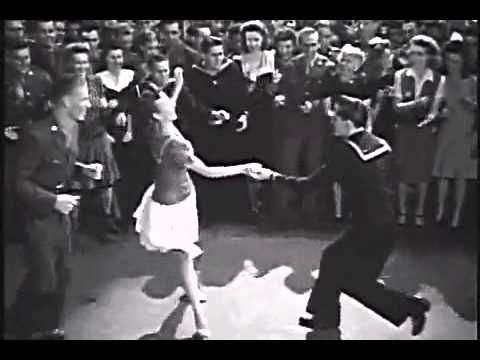 With the advent of Lindy Hop and Jitterbug, communities began to dance to modern jazz and swing as it developed at the time, with Benny Goodman spearheading the impact. The dancers soon incorporated tap and jazz movements into their dance.
With the advent of Lindy Hop and Jitterbug, communities began to dance to modern jazz and swing as it developed at the time, with Benny Goodman spearheading the impact. The dancers soon incorporated tap and jazz movements into their dance. In the mid-1930s, Herbert White, head bouncer at the Savoy, formed the Whitey's Lindy Hoppers dance troupe. One of the most important members of the troupe was Frankie Manning. Hoppers have been featured in the following films: "A Day at the Races" (1937), "Hellzapoppin" (1941), "Sugar Hill Masquerade" (1942) and "Killer Diller" (1948). In 1938, the dance competition "Harvest Moon Ball" for the first time included Lindy Hop and jitterbug in the competition program. They were filmed and presented nationwide in newsreels at the Pathé, Paramount and Universal cinemas between 1938 and 1951.
In early 1938, Dean Collins arrived in Hollywood. He learned to dance the Lindy Hop, jitterbug and swing in New York and spent a lot of time in Harlem and at the Savoy.
 Between 1941 and 1960, Collins danced himself and helped choreograph dance routines for over 100 motion pictures. Today we can judge this by watching 30 second clips of California's top white dancers performing Lindy Hop, Jitterbug, Lindy and Swing.
Between 1941 and 1960, Collins danced himself and helped choreograph dance routines for over 100 motion pictures. Today we can judge this by watching 30 second clips of California's top white dancers performing Lindy Hop, Jitterbug, Lindy and Swing. In the late 1930s and 1940s, the media used the terms lindy hop, jitterbug, lindy, and swing and interchanged them to describe the same styles of dancing that took place on the streets, in nightclubs, at competitions, and in movies. By the end of 19At the age of 36, the Lindi took over the United States. As might be expected, the first reaction to the lindy from most dance instructors was a cool negative. In 1936, Philip Nuttle, president of the American Society of Dance Teachers, expressed the opinion that swing would not survive the winter. In 1938 Donald Grant, president of the Dance Teachers' Business Association, said that swing music "is a degenerate form of jazz whose adherents — the unfortunate victims of economic instability.
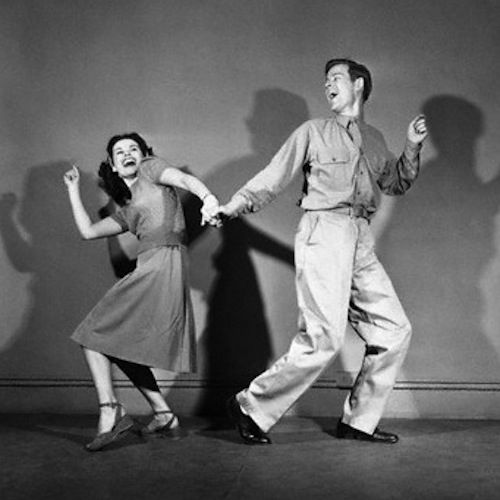 ” In 1942, members of the New York Society of Dance Teachers were told that the jitterbug (a direct descendant of the Lindy) could no longer be ignored.0066 Dance schools like the New York Society of Teachers and Arthur Murray didn't officially start documenting or teaching Lindy Hop, Jitterbug, Lindy and Swing until the early 40's. Ballroom dancers were more interested in learning foreign dances, such as Argentine tango, Spanish paso doble, Brazilian samba, Puerto Rican merengue, Cuban mambo and cha-cha-cha, English quickstep, Austrian waltz and, occasionally, American foxtrot and peabody.
” In 1942, members of the New York Society of Dance Teachers were told that the jitterbug (a direct descendant of the Lindy) could no longer be ignored.0066 Dance schools like the New York Society of Teachers and Arthur Murray didn't officially start documenting or teaching Lindy Hop, Jitterbug, Lindy and Swing until the early 40's. Ballroom dancers were more interested in learning foreign dances, such as Argentine tango, Spanish paso doble, Brazilian samba, Puerto Rican merengue, Cuban mambo and cha-cha-cha, English quickstep, Austrian waltz and, occasionally, American foxtrot and peabody. In the early 1940s, Arthur Murray's dance studio enthusiasts looked at what was happening on the dance floors in the cities and sent their teachers to teach what they were dancing. Thus, Arthur Murray's studios taught different styles of undocumented swing in many cities.
In the early 40s, Laura Haile, being a swing dancer and sportswoman, recorded what she saw at the dances of the white community.
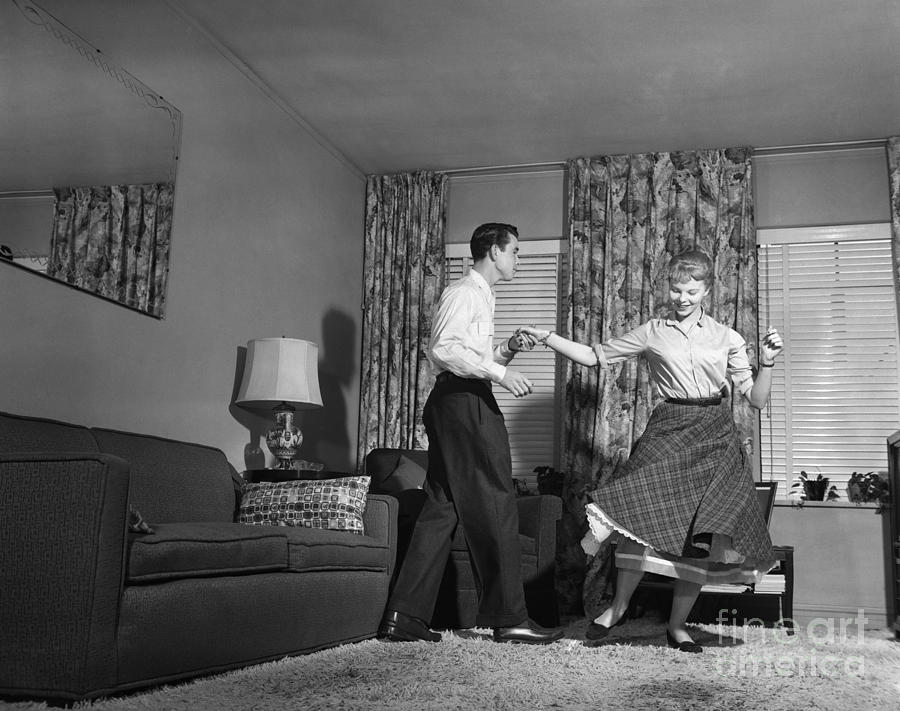 At the time, Southern California nightclubs and competitions were led by Dean Collins with Lenny Smith and Lou Southern. Laura Hale gave their style the name Western Swing. She began teaching at Arthur Murray's studios in 1945. Dean Collins coached Arthur Murry's teachers in Hollywood and San Francisco in the late 40's and early 50's.
At the time, Southern California nightclubs and competitions were led by Dean Collins with Lenny Smith and Lou Southern. Laura Hale gave their style the name Western Swing. She began teaching at Arthur Murray's studios in 1945. Dean Collins coached Arthur Murry's teachers in Hollywood and San Francisco in the late 40's and early 50's. After the war, soldiers and sailors returned from abroad and continued to dance at their military bases and beyond. The jitterbug was danced to country music in country bars and popularized in the 80s.
While between the 20s and 90s the music changed (jazz, swing, bop, rhythm and blues, rock and roll, beat, disco, country), lindy hop, jitterbug, lindy and swing have branched out in the US into many regional styles. The late 1940s highlighted many dances that developed from rhythm and blues: Houston push (push) and Dallas whip (whip), imperial swing (in St. Louis), Washington hand dance (D.C. hand dancing) and Carolina shag (shag) — and these are just a few.
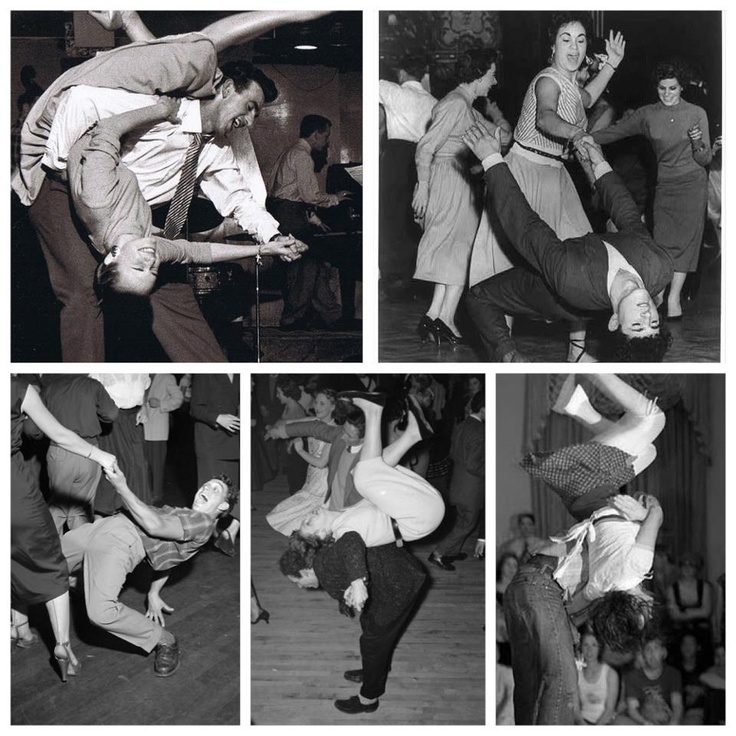
Laura Hale first published her dance notes as a western swing program in 1951 for the Arthur Murray Dance Studio in Santa Monica. In the 1950s, she presented this program throughout America in masterclasses sponsored by the Arthur Murray Studios. For the past 45 years, Laura Hale's "Original Western Swing Program" has been taught by Arthur Murray's studios with minor revisions.
From the mid-1940s to this day, Lindy Hop, Jitterbug, Lindy and Swing have been disassembled and refined in detail by ballroom dance instructors to adapt dance elements to the general public - maybe more clumsy, but paid for the lessons. As a result, ballroom dancing studios developed and developed "East Coast Ballroom Swing" and "West Coast Ballroom Swing".
In the late 1950s, television brought American Bandstand, The Buddy Dean Show, and other programs to teenage viewers. Teenagers danced rock and roll with Elvis Presley, Little Richard and Chuck Berry at the forefront of the attack, although in reality they were Slightly altered swing, lindy and jitterbug steps.
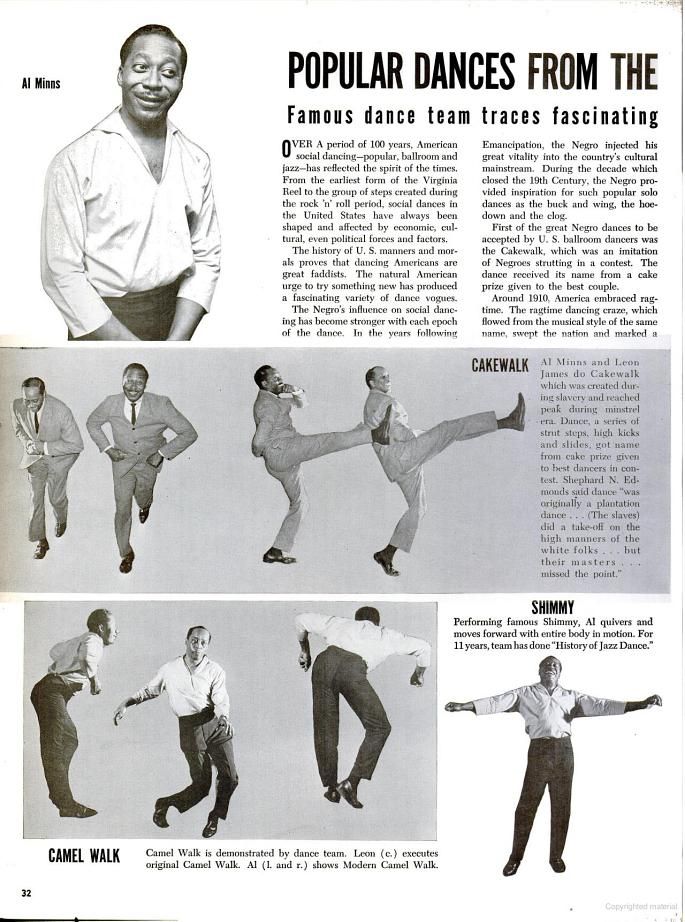 In 1959, some of the dance communities in California, where Skippy's studio set the tone Blair (Skippy Blair), changed the name of Western swing to West coast swing (West Coast Swing), so there was no confusion with dancing in the style of country and western.
In 1959, some of the dance communities in California, where Skippy's studio set the tone Blair (Skippy Blair), changed the name of Western swing to West coast swing (West Coast Swing), so there was no confusion with dancing in the style of country and western. At the end of the 20th century, 60-year-old dancers twitch their feet to the sounds of shag, jitterbug, lindy and swing.
SWING STYLES
Leader - partner
Follower Partner
1. Savoy Swing: A style of swing popular at New York's Savoy Ballroom in 30-40 years, originally performed under swing music. Savoy swing very fast, bouncy, sloppy dance style
2. Lindy (Lindy): more ennobled style.
3. West Coast Swing: An agile style that was popular in California clubs in the 1930s and 40s. According to a population survey in 1989, it was recognized as a dance of the state of California.
4. Whip (Whip): a style popular in Houston, Texas, emphasizing the partner's rotation movements between dance positions with a swinging rhythm break (wave rhythm break).